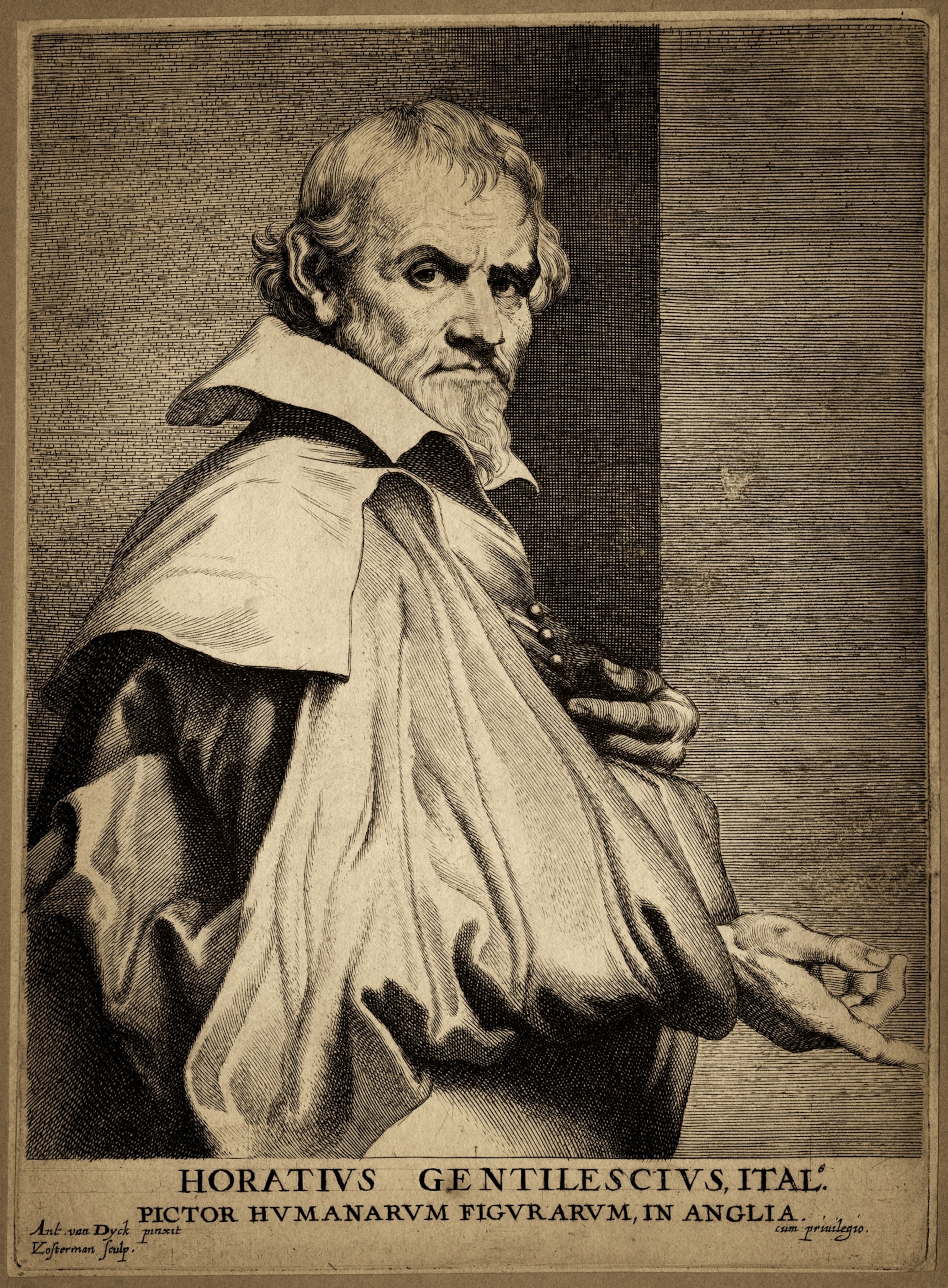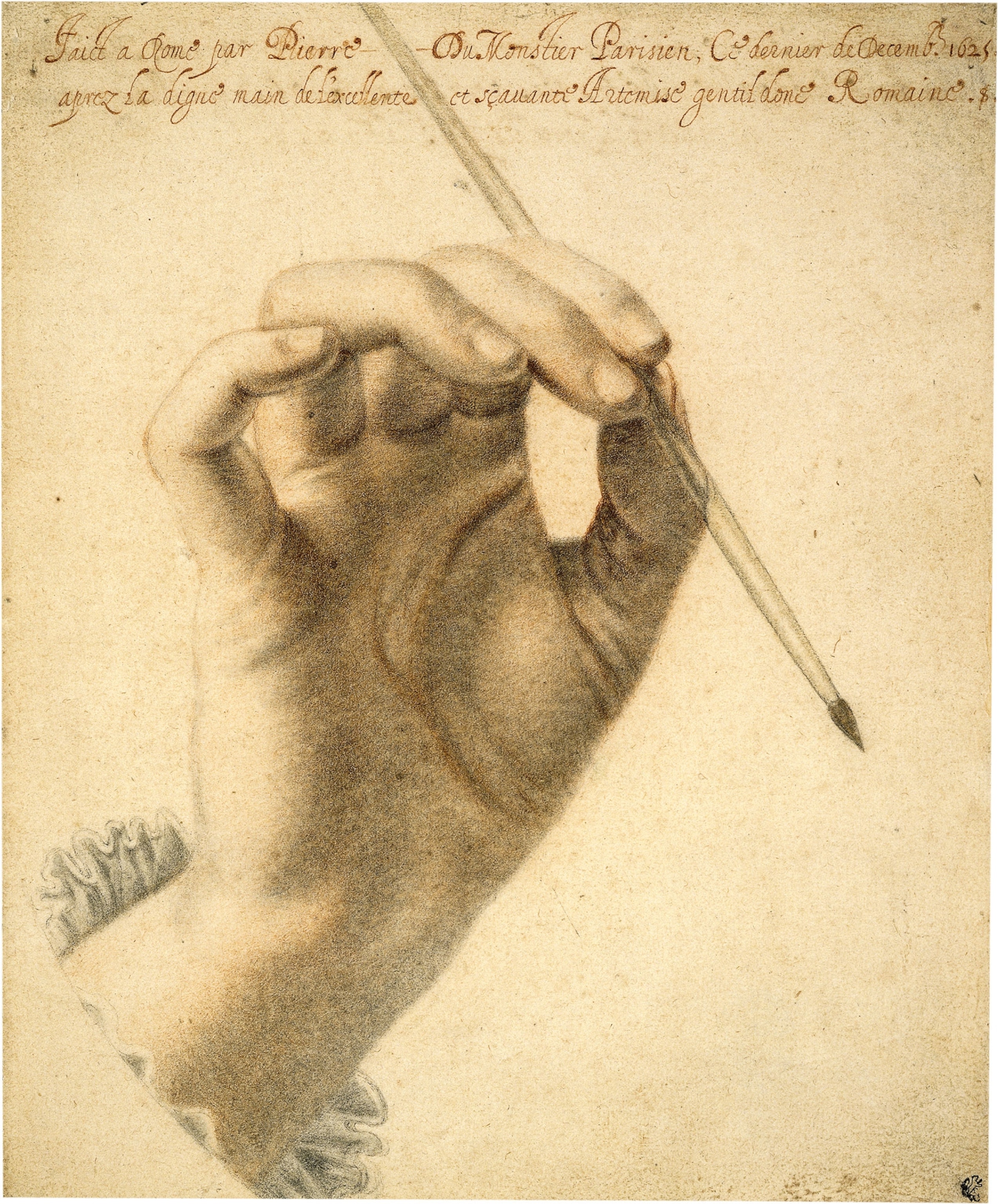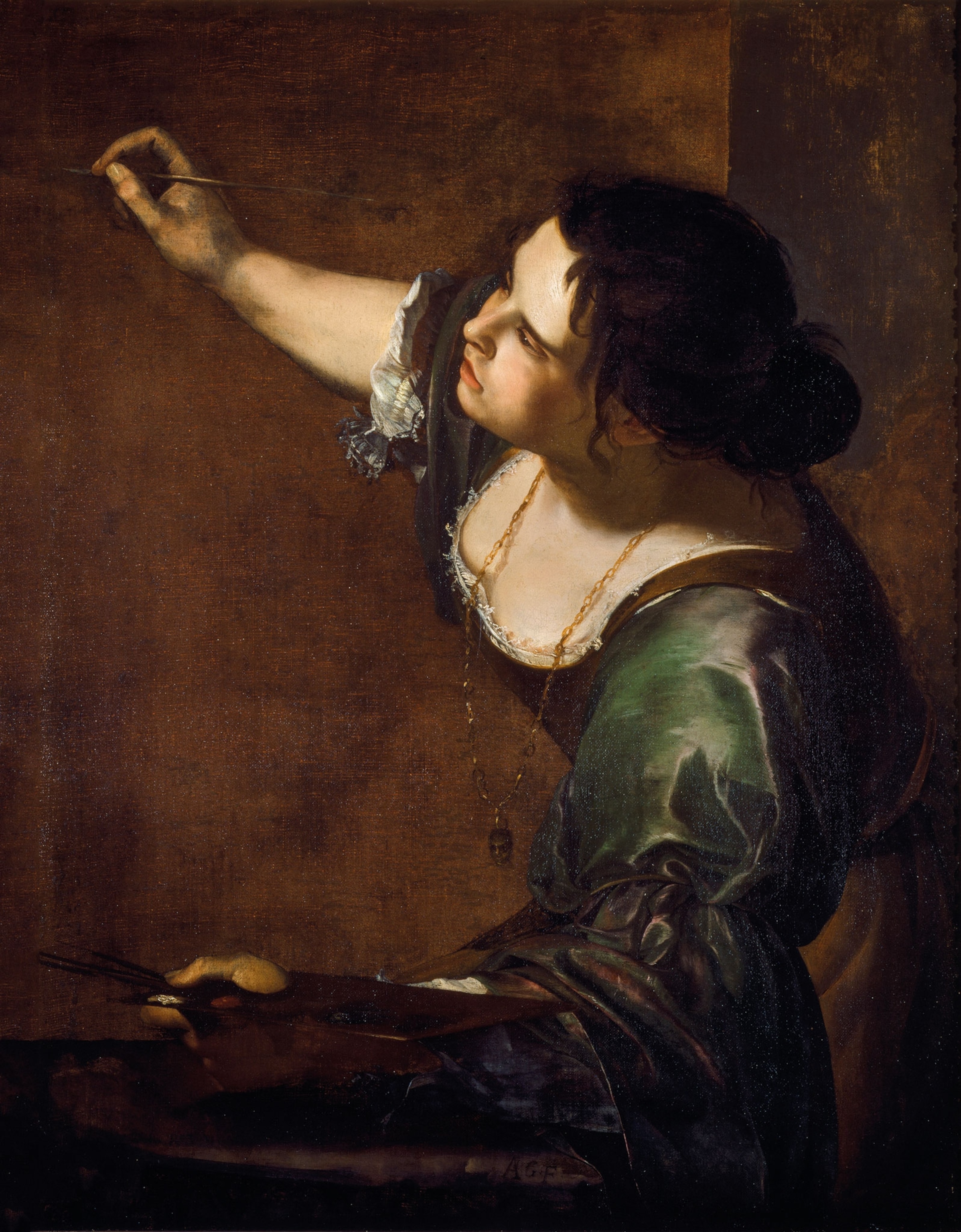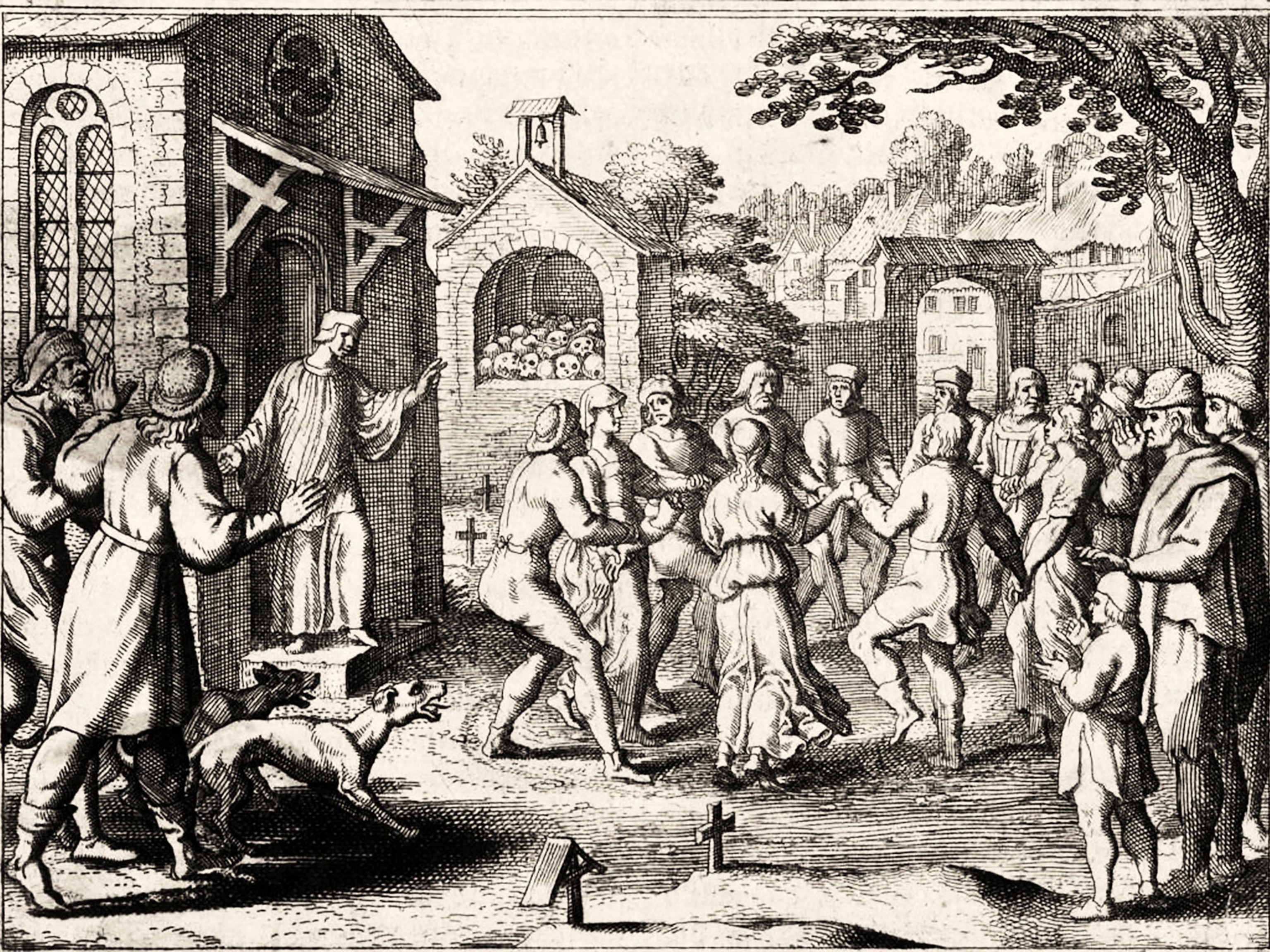This audacious artist shocked 17th-century Italy with her work
Artemisia Gentileschi's paintings were bold, vibrant, and sometimes violent. Her undeniable talent helped overcome prejudice to secure her legacy.

Artemisia Gentileschi was an artist who knew the pitfalls of being a woman. As she wrote to her patron, Antonio Ruffo, in 1649, “I fear that before you saw the painting you must have thought me arrogant and presumptuous ... You think me pitiful because a woman’s name raises doubts until her work is seen.”
At age 56, she had achieved something close to impossible for a woman in 17th-century Italy: She had become a highly accomplished and successful painter. Yet, as admired as she was in her profession, she could still be wounded—as the letter to Ruffo shows—by prejudices arising against her gender. There were other troubles from the past to contend with, the legacy of which found expression in her greatest works. (This Renaissance warrior woman defied powerful popes.)
Artemisia Gentileschi was born in Rome in 1593. Her father, Orazio, was a highly regarded painter. Her mother died in 1605, and Orazio did not remarry. At the age of 12, Artemisia became the matriarch of the Gentileschi family.

Like many young girls of her time, she led a sequestered life, rarely allowed to venture outside except to attend church. She avoided being sent to a convent and instead spent long hours in her father’s studio, which was part of their home. Women were apprenticed to artists’ studios, the common practice for aspiring male painters of the time. She built on her natural talents by studying with her father. (Medieval woman ID'd as an artist because of her teeth.)
The Italian art of Gentileschi’s childhood had been shaken up by the dynamism, flamboyance, and theatricality of the baroque artist Michelangelo Merisi, better known as Caravaggio. Orazio was a fervent admirer of this dramatic painter, and his influence is evident in both Orazio’s and his daughter’s work. Her early paintings, works of precocious brilliance such as “Susanna and the Elders” (1610), completed when she was just 17, show clear traces of Caravaggio’s distinctive style. (Was Lucrezia Borgia a predator or pawn?)
Violence and vengeance
Around 1612 Artemisia began to paint a popular subject: the biblical story of Judith beheading Holofernes, who threatens to destroy her home. In the story, the Assyrian general Holofernes desires the widow Judith; he calls her to his tent but passes out from drink. To protect her virtue and her people, she decapitates him. The subject was popular among Renaissance artists, including Caravaggio. Most art historians believe Artemisia had personal reasons to paint this violent subject. (How Botticelli invented a new kind of Renaissance art.)
Agostino Tassi was a young painter who had befriended Orazio when both were working on a fresco in the palace of Cardinal Scipione Borghese. Orazio asked Tassi if he would instruct Artemisia on techniques in perspective. Tassi accepted the offer. In 1611, while her father was away working, Tassi persuaded Artemisia’s chaperone to leave the two alone during their lesson. The neighbor left, and Tassi raped Artemisia. When he returned, Orazio denounced his former friend to the authorities. Tassi was brought to trial in 1612.

A transcript of the entire proceedings survives. It includes the following testimony from Artemisia Gentileschi: “He pushed me against the edge of the bed . . . and put his knee between my thighs so that I couldn’t bring them together.” In the confused aftermath of the assault, Tassi had promised that he would marry Artemisia. Rather than the violent assault, it was his broken promise of marriage that formed the centerpiece of the case against Tassi.
The trial was extremely unpleasant for Gentileschi. She was subjected to the indignity of a pelvic examination. She also lived in a time when it was believed that torture could be used for interrogation. She was made to endure thumbscrews. As the device was attached to her hands—the hands she needed to paint—she turned to Tassi with a terrible cry: “This is the ring you give me, and these are your promises!”
Tassi was convicted and sentenced to exile, although he would use his connections to return to Rome. Soon after the trial, Gentileschi married Pierantonio Stiattesi, a painter from Florence, whose talent was far inferior to that of his wife. The extent of Gentileschi’s affection for him is unclear, and their union may have been hastily arranged to distract from the scandal of the trial. Still, the couple moved to Florence, far away from Rome and the violent memories there.
Fame in Florence
Settled in Florence in a respectable marriage, Gentileschi bore two daughters (who would become painters like their mother). She resumed her painting career. Despite her colossal talent, male relatives were still necessary to help advance her career. In a 1612 letter to the powerful Christine of Lorraine, the mother of Cosimo II de’Medici, the Grand Duke of Tuscany, her father exhorted her in the following terms:
[She has] become so skilled that I can venture to say that today she has no peer. Indeed, she has produced works which demonstrate a level of understanding that perhaps even the principal masters of the profession have not attained.

Gentileschi began to associate with some of the great Florentines of the age, such as the astronomer Galileo Galilei and Michelangelo the Younger. The latter—the great-nephew of Michelangelo—commissioned her to paint the “Allegory of Inclination” for the Casa Buonarotti. She painted the female nude so realistically (a self-portrait, according to some sources) that clothes were later painted over parts of the body. She entered the Florentine Academy of Fine Arts in 1616—the first woman to do so—and then established herself as one of the leading practitioners of the modern style of painting. (The Sistine Chapel was Michelangelo's masterpiece.)
You will find the spirit of Caesar in this soul of a woman.Artemisia Gentileschi, 1649 letter to a patron
Two important features of Gentileschi’s work were inspired by Caravaggio: tenebrism, the use of contrasts of light and deep shade to produce an effect of heightened emotion, and the naturalistic depiction of human figures. Although Caravaggio had acquired a host of imitators and disciples, Gentileschi managed to absorb his stylistic achievements while also developing a distinctive language of her own.
Her ability to express acute psychological insight is demonstrated in two works painted in 1620:“Jael and Sisera,” based on the story in the Book of Judges in which the Israelite woman Jael kills an enemy general. She also painted a new version of her circa 1612-13 “Judith Beheading Holofernes.” This iteration of her earlier treatment of the Judith story coincided with Gentileschi’s 1620 return to Rome, scene of her childhood, rape, and trial.

The later version of the painting reveals her development as a artist. The figures in the later work show more refinement in terms of their composition. Perhaps the most distinctive change is Gentileschi’s depiction of blood. In the first work, blood pools beneath Holofernes’s neck, but in the second, it violently spurts forth in bold red strokes on the canvas. (These female artists changed the way we look at women.)
An independent life
Gentileschi and her husband separated, granting her independence unique for her time. She traveled often with her daughters, spending time in Naples and Venice. In 1638, on the invitation of England’s King Charles I, she joined her father Orazio in London, where both artists collaborated on paintings for the ceilings of the Great Hall in the Queen’s House in Greenwich. After her father died the following year, she decided to stay in England. She painted portraits of such skill and brilliance that, according to one contemporary biographer, her fame surpassed that of her father. Gentileschi returned to Italy, probably in 1640 or 1641 and resided in Naples until her death around 1652.
For many years following her death, her work was forgotten, ignored, or misattributed. Her first version of the painting “Judith and Holofernes” from 1612 has often been credited to Caravaggio, while for many years it was assumed “Susanna and the Elders” was painted by her father. In the early 20th century, however, this most remarkable and brilliant of baroque painters started to enjoy a rebirth of admiration and respect. (Here's how experts rediscover "lost" masterpieces.)








